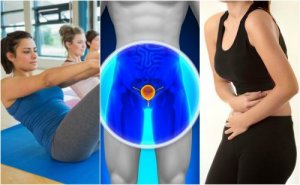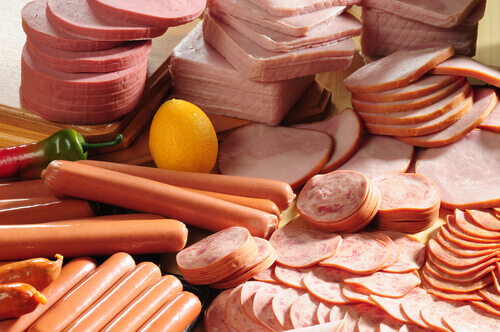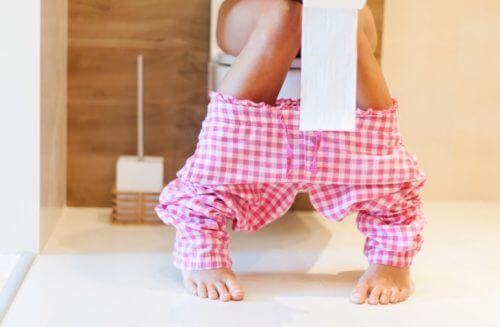6 Tips to Cope with an Over-active Bladder

Over-active Bladder is a condition that causes involuntary urinating, since the muscles around this organ contract suddenly.
Sometimes it only produces a few drops of urine, while in more serious cases it leads to the emptying of a large on fluid from the bladder.
Its development normally alerts us to the risk of incontinence and, in fact, a large number of cases end up this way due to the lack of control in the early stages.
The most worrying thing is that many people overlook their symptoms and only worry when the problem has already gotten more serious.
This situation tends to hinder treatment and, in general, reduces quality of life.
Because of this it is important to analyse any significant change in your urination habits and follow certain routines to help treat the problem.
A many people are facing this problem, we’ve dedicated this space to 6 recommendations that can help to cope with Over-active Bladder.
Read on!
1. Avoid eating certain foods

The adoption of a healthy and balanced diet is one of the most important keys to the control of this disorder.
While it’s easy to ignore, there are some stimulant foods that can increase the severity of symptoms.
So, as well as controlling the consumption of fats and calories, it’s also best to avoid foods such as:
- Alcoholic drinks
- Spicy foods
- Citrus juices
- Beverages and foods that contain caffeine
- Carbonated drinks
- Milk and other derivatives
- Sugar and refined flours
- Fried foods and sausages
2. Include Kegel exercises in your routine
The popular Kegel exercises are focused on working the pelvic floor which is the area where the bladder is located.
These activities help strengthen the muscles that surround the bladder and increase the ability to control the urge to urinate.
As well as this, they’re also a therapy which decreases the risk of urinary incontinence and can improve your sex life.
Best of all, they don’t take much time and can be included as part of your regular training routine.
3. Schedule your visits to the bathroom

For people with Over-active Bladder it can be a problem to plan their visits to the bathroom, since the need to urinate appears frequently.
However, this habit can be become a therapy and training, since it makes it easier to control the problem.
The idea is to plan the moments when you go to the bathroom, so that the bladder begins to synchronise and adapt.
This way the spasms decrease when there is no liquid to expel and, at the same time, the number of times you’ll need to urinate is reduced.
- Of course, it is not about holding on for long periods of time until your bladder can’t cope.
- The idea is to hold the urge for 3 or 5 minutes and, little by little, as the time increases, you gain more control.
4. Control your liquid intake
We know that daily water consumption is a habit which helps us stay healthy and full of energy.
However, those who suffer from Over-active Bladder should be careful, since the excess consumption can hinder your treatment.
Although it is not a question of excluding it completely from your diet, it’s advisable to reduce your intake while you’re strengthening your bladder.
5. Keep an eye on your body weight

Be very careful! Excess body weight can be a trigger for Over-active Bladder and incontinence.
The fat that accumulates in the body weakens the muscles that support this organ and, little by little, reduce your ability to control urination.
For this reason it’s important to monitor your body weight, adopting habits that keep it at healthy and stable levels.
6. Stop smoking
Cigarette smoking is one of the most harmful practices for patients with bladder problems.
Cigarettes are full of toxins and chemical agents which, over time, cause inflammation and weakening of the muscles.
Its effects are not only noticed in respiratory health, but also in the urinary and cardiovascular system.
Do you suffer an uncontrollable need to urinate? Are you urinating involuntarily? If so, consult your doctor to determine if you have Over-active Bladder.
Once you’ve got the diagnosis, put these recommendations into practice to better cope with it day to day.
All cited sources were thoroughly reviewed by our team to ensure their quality, reliability, currency, and validity. The bibliography of this article was considered reliable and of academic or scientific accuracy.
- Eduardo Martínez, A., José, L., Ruiz, C., Luis Gómez, P., Miguel Ramírez, B., Francisco Delgado, O., … de Estudio Cooperativo, G. (2009). Prevalencia de incontinencia urinaria y vejiga hiperactiva en la población española: Resultados del estudio EPICC. Actas Urológicas Españolas. https://doi.org/10.1016/S0210-4806(09)74117-8
- Perales Cabanas, L., & Jiménez Cidre, M. (2002). Vejiga hiperactiva. Archivos Espanoles de Urologia.
- Chapple, C. R. (2006). Avances en el diagn??stico y tratamiento del paciente con vejiga hiperactiva/incontinencia. Revista Cubana de Farmacia.
This text is provided for informational purposes only and does not replace consultation with a professional. If in doubt, consult your specialist.








